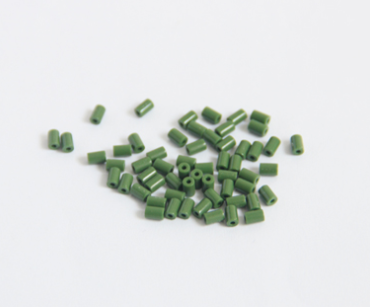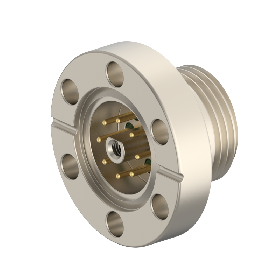Pay attention to the following physical properties when manufacturing and using glass vacuum systems and components.

(1) Viscosity. Since glass does not have a fixed melting point, its viscosity η (or rigidity) gradually decreases as its temperature increases. When using and processing glass, it is necessary to understand the viscosity value corresponding to several temperature ranges. Usually four kinds of viscosity are used to define the strain point, annealing point, softening point and working point. Before the strain point (η≈1013.5Pa·s) temperature, glass is brittle. This temperature is the limit temperature at which the glass can be used safely. At this temperature, it takes several hours to eliminate the internal stress in the glass. At the annealing point (η≈1013P) temperature, the internal stress can be eliminated within ten minutes.
(2) Linear expansion coefficient and thermal shock resistance. The coefficient of linear expansion is usually a characteristic parameter used to classify glass into two categories: "soft" and "hard". Whether it is for glass-to-glass or glass-to-metal sealing, the coefficient of linear expansion is an important parameter.
If glass with different linear expansion coefficient a is combined together, when the temperature is lower than Tg, the sealing point will crack under the action of stress. If the a value of the soft glass differs by no more than 10%, and their transition temperature is also close, they can be combined. However, if the above conditions are not met, hierarchical sealing should be adopted so that the stress of the sealing point of the intermediate glass does not exceed the maximum allowable value. In the sealing of glass and metal, several factors must be considered, such as the form of sealing, the plasticity of the sealed metal and the annealing process.
In vacuum technology, the linear expansion coefficient a of glass also determines the thermal shock resistance of glass. In vacuum engineering, sometimes thermal shock is very frequent. Because of the low tensile strength of glass, the thermal shock caused by local rapid cooling is more serious than the thermal shock caused by local rapid heating. The larger the thermal shock capacity caused by the local rapid cooling, the higher the temperature gradient, the more likely it is to cause the glass to break. Thermal shock resistance is related to factors such as linear expansion coefficient, thermal conductivity and geometric shape, so thicker glass or glass with more complex structure is easily broken by thermal shock.
③ Thermal conductivity. The thermal conductivity of glass is much lower than that of metals, about two orders of magnitude lower than the thermal conductivity of iron and nickel. The thermal conductivity values of different types of glass are not much different, and the value varies in the range of (6.7~12.6)×10-3J/(cm·s·℃), lead glass (soft glass) is a small value, borosilicate glass (Hard glass) is a large value. The thermal conductivity of pure SiO2 is 13.8×10-3J/(cm·s·℃). If the sealing heat distribution between the glass and the metal is not uniform, the glass with a small thermal conductivity value will break.
(4) Resistivity. The volume resistivity of glass itself is very high (up to 1019Ω·cm), and its surface resistivity is usually affected by water or other impurities adsorbed on the surface, and its value is several orders of magnitude lower.
Generally, the resistivity of fully annealed glass is higher than that of strained glass. When the glass is heated in a vacuum, water molecules escape from the deep layer of the glass and get a complete degassing, so the insulation performance of the glass surface is greatly improved. In addition, after the surface of the glass is treated with silicone resin or other waterproof materials, the influence of humidity on the surface resistivity of the glass can be greatly reduced.
(5) Electric breakdown strength. Electrical breakdown strength is measured by the electric field strength required to produce electrical breakdown. The electrical breakdown strength of glass at room temperature is generally much higher than that of air. Because glass has poor thermal conductivity and its resistivity depends on temperature, the use of thick-walled glass in vacuum will often lead to electrical breakdown under the promotion of temperature. In the coating equipment, a shield can be used to avoid the electron bombardment that causes the wall of the glass to be charged.
(Huiputech)

Z-S-CF16-0810S,Z-S-CF16-0810M,Z-S-CF16-0810L
2025-11-04
Contact : Martin
Tel : +86 18588203671
Mobile : +86 18588203671
Fax : +86 18588203671
Email : Martin@huiputech.com
Address : 3/F, Building F, GLORY Technology Park, No.2 Baolong 5th Road, Longgang District, Shenzhen, Guangdong, China.